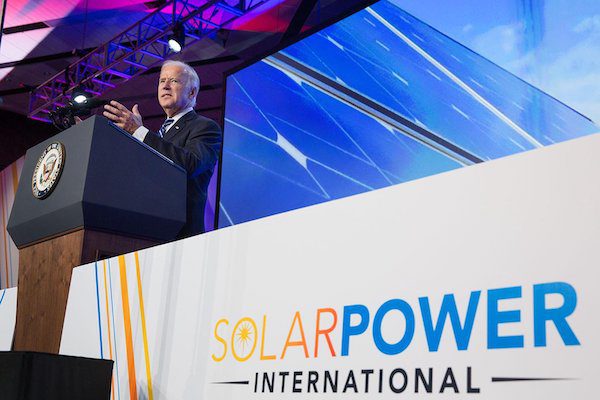
What’s Next For Climate Change Policy?
Image from joebiden.com
On his first day in office, President Joe Biden signed an executive order to rejoin the Paris Climate Agreement, almost three years after the Trump administration announced that the United States would withdraw from it. Ever since 2015, when the agreement was first adopted, 195 countries have joined, with the U.S. being the first and only one to have abandoned it so far. The agreement is non-binding and sets goals for nations to lower carbon emissions and attempt to keep the rapid change in global temperatures somewhat under control.
But considering that the United States is one of the biggest CO2 polluters in the world, right behind China, this is only the beginning of major environmental effects. Biden made his climate change plan, the Clean Energy Revolution, one of the pivotal aspects of his campaign. And according to his campaign website, his climate plan will “lead the world in addressing the climate change emergency.” But with hundreds of Trump’s actions needing repeal, this is easier said than done.
Throughout the last four years, the Trump administration set off an aggressive deregulatory initiative that attempted to get rid of almost all of Obama’s efforts against climate change.
A study was done at Columbia Law School to track all acts of environmental protection deregulation during the Trump presidency. In 2017, President Trump issued two memoranda to inform the army to speed the process on Keystone XL and Dakota Access Pipelines, both wide-stretching pipelines through the country. Later that month, he signed an executive order to inform agencies to repeal two regulations on environmental protection every time one is implemented.
The next month, President Trump signed another executive order creating a task force to analyze standing regulations and find candidates to repeal. Trump then proposed a new environmental budget, eliminating funding for several programs, as well as cutting regulations such as the Clean Power Plan. This was just three months into his presidency. The amount of action went on every year.
Biden’s plan promises a federal investment of 1.7 trillion dollars for environmental justice over the next ten years and sets as its goal a 100% clean energy economy by 2030. Also in his first day in office, Biden reversed Trump’s executive order to speed up the construction of the Keystone XL pipeline.
This trend of repealing executive orders is expected to continue, most likely with aims to conserve 30% of the nation’s waters by 2030 and preventing drilling in the Arctic Refuge. Biden will have to do work in congress, to get his $2 trillion dollar plan to transition from fossil fuel energy to clean energy and to cut carbon emissions to eventually reach net-zero.
Biden’s plan has just begun, but his work in the Senate and the House will have to continue to show substantial change.


